A monthly review and outlook of the Global Listed Infrastructure sector.
Market review - as at November 2025
Global Listed Infrastructure delivered solid gains in November against a backdrop of macroeconomic uncertainty and concerns for high tech / AI valuations. The FTSE Global Core Infrastructure 50/50 index^ returned +3.3%, while the MSCI World index ended the month +0.3% higher.
The best performing infrastructure sector was Energy Midstream (+6%) as investors identified value following a recent period of underperformance. Robust earnings numbers and a positive demand outlook provided additional support. Towers / DCs (+1%) were among the worst performing infrastructure sectors, owing to lingering concerns about potential headwinds to mobile towers’ growth prospects.
The best performing infrastructure region was Japan (+11%). The country’s electric utilities rallied as the re-start of TEPCO’s Kashiwazaki-Kariwa nuclear power plant - which has been idled since the 2011 Fukushima disaster - raised hopes that other re-starts may follow. The worst performing infrastructure region was the UK (+1%) as persistent concerns for the country’s fiscal situation weighed on sentiment towards its regulated utility stocks.
^ MSCI World Net Total Return Index (USD) is provided for information purposes only. Index returns are net of tax. Data to 30 November 2025. Source: Bloomberg, First Sentier Investors / Lipper IM. All stock and sector performance data expressed in local currency terms.
Market outlook and Strategy
The Portfolio invests in a range of listed infrastructure assets including toll roads, airports, railroads, utilities and renewables, energy midstream, wireless towers and data centers. These sectors share common characteristics, like barriers to entry and pricing power, which can provide investors with inflation-protected income and strong capital growth over the medium-term.
Toll roads remain the portfolio’s largest sector overweight. Their domestically focused business models give them limited direct sensitivity to tariffs or trade restrictions. Revenues are typically robust, supported by consistently high operating margins. Pricing is often linked to inflation, with negotiated compensation for additional capital expenditure. Over the medium term, additional road capacity will be needed to ease urban congestion in the developed world and to support economic development in the developing world. In the absence of sufficient government funding, toll road operators are well-positioned to meet this need.
The portfolio is also overweight towers / data centres. We continue to expect structural growth in demand for mobile data, underpinned by increasing reliance on digital connectivity, to support steady earnings growth in the mobile tower sector. While recent consolidation activity within the US telecom sector (mobile towers’ primary customer base) has raised concerns about customer turnover rates, longer-term growth drivers remain. Data centers are benefitting from companies seeking the improved reliability and flexibility offered by cloud computing, and from the surge of interest in AI which is also driving data center demand.
Utilities / renewables make up a substantial part of the portfolio. These stocks are set to benefit from unprecedented growth in demand for electricity, being driven by the needs of AI and data centers, as well as industrial onshoring and a broad-based move towards electrification. Earnings growth rates for US utilities have already begun to accelerate due to the required investment to support greater demand for power. In the event of an economic downturn, utility earnings are likely to prove relatively resilient, owing to their regulated earnings frameworks and essential service nature.
The portfolio is underweight energy midstream. Within this space, the portfolio has overweight exposure to faster-growing US energy midstream stocks but is substantially underweight Canadian companies, which tend to have higher leverage and slower growth. Rising demand for electricity in the US, as well as being positive for utilities, is also likely to support demand for natural gas as a feedstock for gas-fired power plants, creating additional growth opportunities for US-based energy midstream companies.
Source : Company data, First Sentier Investors, as of 30 November 2025.
Global Listed Infrastructure
Infrastructure powers the world we live in – and when it comes to on-the-ground research, our team can be found on site
Investing in global listed infrastructure can offer inflation-protected income and steady capital growth from real assets delivering essential services. We search for best-in-class assets worldwide with high barriers to entry, structural growth and pricing power.
Read our latest insights
Important Information
Investment involves risks, past performance is not a guide to future performance. Refer to the offering documents of the respective funds for details, including risk factors. The information contained within this material has been obtained from sources that First Sentier Group believes to be reliable and accurate at the time of issue but no representation or warranty, expressed or implied, is made as to the fairness, accuracy or completeness of the information. To the extent permitted by law, neither First Sentier Group, nor any of its associates, nor any director, officer or employee accepts any liability whatsoever for any loss arising directly or indirectly from any use of this. It does not constitute investment advice and should not be used as the basis of any investment decision, nor should it be treated as a recommendation for any investment. The information in material may not be edited and/or reproduced in whole or in part without the prior consent of First Sentier Group. Reference to specific securities (if any) is included for the purpose of illustration only and should not be construed as a recommendation to buy or sell the same. All securities mentioned herein may or may not form part of the holdings of First Sentier Group’s portfolios at a certain point in time, and the holdings may change over time.
This material is issued by First Sentier Investors (Hong Kong) Limited and has not been reviewed by the Securities and Futures Commission in Hong Kong. First Sentier Group, First Sentier Investors, FSSA Investment Managers, Stewart Investors, RQI Investors and Igneo Infrastructure Partners are the business names of First Sentier Investors (Hong Kong) Limited.
First Sentier Investors (Hong Kong) Limited is part of the investment management business of First Sentier Group, which is ultimately owned by Mitsubishi UFJ Financial Group, Inc. (“MUFG”), a global financial group. First Sentier Group includes a number of entities in different jurisdictions.
To the extent permitted by law, MUFG and its subsidiaries are not responsible for any statement or information contained in this material. Neither MUFG nor any of its subsidiaries guarantee the performance of any investment or entity referred to in this material or the repayment of capital. Any investments referred to are not deposits or other liabilities of MUFG or its subsidiaries, and are subject to investment risk, including loss of income and capital invested.
© First Sentier Group
Get the right experience for you
Your location :  Hong Kong
Hong Kong
Australia & NZ
-
 Australia
Australia -
 New Zealand
New Zealand
Asia
-
 Hong Kong (English)
Hong Kong (English) -
 Hong Kong (Chinese)
Hong Kong (Chinese) -
 Singapore
Singapore -
 Japan
Japan

















 United Kingdom
United Kingdom 